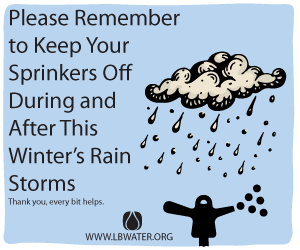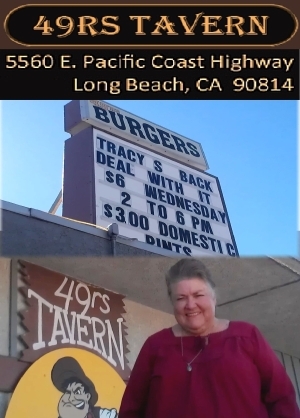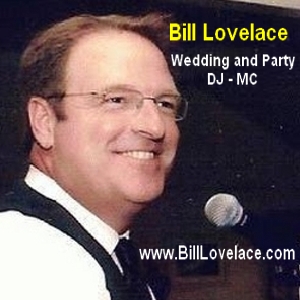Their item, agendized on the letterhead of Councilwoman Lowenthal (text below), cites multiple grounds for supporting the measure while not disclosing that the proposal as currently written is opposed by the Long Beach Unified School District Board of Education on grounds the measure would drain roughly $700,000 annually from the cash strapped school district. (LBREPORT.com coverage, click here).
The proposed property parcel tax measure is also opposed by L.A. County Supervisor Don Knabe who states on his website, "I strongly oppose this Measure, and believe that the way the process is being managed is a sneaky attempt to get it passed." Supervisor Knabe is one of the five Supervisors who'll decide at or after a Jan. 15 public hearing whether to authorize an election -- which County staff proposes to conduct only by mail.
A County "protest" form, by which property owners can state their individual opposition to the proposed property parcel tax, went mailed shortly after November elections and appeared to a number of recipients to be disguised a routine junk mailing.
The Lowenthal/Neal agendizing memo's use of the phrase "as it is currently proposed" is significant inasmuch as it would convey that Long Beach City Hall doesn't seek changes in the measure that might potentially include lowering the amount of the parcel tax levy or exempting school districts from its terms.
Below is the full text [without attachments] of the Councilmembers' agendized item:
BACKGROUND INFORMATION:
Annually, the Los Angeles River's infamous "First Flush" brings thousands of tons of marine
debris and non-point source pollution to our beaches, marina and harbor. Sadly, Long Beach
is ground zero for urban runoff filled with litter and chemicals from the LA basin. What starts
out as rainfall in communities as far as 40 miles away from Long Beach becomes marine
debris and harmful toxins on our beaches, floating in a few feet of water off our shores and
collecting in our marinas. The City of Long Beach spends millions of dollars every year and
countless staff and volunteer hours, cleaning up marine debris and addressing the harmful
health effects of chemical pollution, of which 95% comes from outside the city; not to mention
the lost revenue associated with people's perception of the City's beaches and shoreline,
which affects our economic development, recreation and tourism. This funding, human
resources and lost revenue could be better spent on public safety and other quality of life
issues.
Almost every waterway in the Los Angeles County region has been found to be contaminated
with toxins, trash and pollutants at levels well above public health standards and Clean Water
Act regulations. Independent, scientific water quality tests have recently determined that 7 out
of the 10 most polluted beaches in California are on the Los Angeles coast. Storms and runoff
from other sources carry over three million tons of trash and toxic pollutants to the County
shoreline each year, leading to substantial fines and lawsuits that impact businesses and
municipalities alike. Polluted storm water and urban runoff flush bacteria and litter into storm
drains, beaches, lakes and rivers-causing public health warnings about high bacteria levels
and sometimes even beach and lake closures. For instance, Long Beach had three beach
closures and five rain advisories in 2012 - an improvement over prior years, but still
unacceptable for a city making every effort to solidify its reputation as a coastal destination to
tourists and an active, healthy community for its residents.
Untreated urban runoff has been found to contain toxic heavy metals (lead, mercury,
chromium and arsenic), pesticides, fertilizers, petroleum hydrocarbons, animal waste, trash,
and bacteria. Research has shown that exposure to recreational water polluted by urban
runoff can result in several types of serious illnesses, including: gastroenteritis, with symptoms
such as vomiting, diarrhea, nausea or stomachache accompanied by a fever; acute respiratory
disease; and, eye, ear and skin infections. Other severe illnesses such as hepatitis are also
associated with bathing in polluted recreational waters. A number of studies have shown that
each year hundreds of thousands of children and adults develop gastrointestinal and
respiratory illnesses after visiting LA County beaches. Children, the elderly, pregnant women
and people with weak immune systems are at greatest risk from waterborne pathogens.
(Dwight, RH ret al]. "Estimating the Economic Burden from Illnesses Associated with
Recreational Coastal Water Pollution-A Case Study in Orange County, California," Journal of
Environmental Management, 76(2), 2005: 95-103. Brinks, MV ret al]. "Health Risk of Bathing in
Southern California Coastal Waters, Archives of Environmental & Occupational Health, 63(3),
2008: 123-135.)
Meanwhile, Southern California imports more than 2/3 of its water from Northern California
and the Colorado River and we are projected to need about 80% more water by 2025. The
Los Angeles County Flood Control District captures and cleans storm water - mainly in the
San Gabriel Valley. Despite our mainly arid climate, it only takes one inch of rainfall in
southern California to send more than 10 billion gallons of runoff to the ocean. Therefore, if
we can capture just the first 3/4 inch, it is enough water for 700,000 families every year. That
represents about half the additional water needed by 2025.
While cities like Long Beach and unincorporated communities are making strides with limited
funds to address polluted storm water runoff, there is still work to do to improve sources for
clean drinking water supplies, preserve our waterways and beaches, and protect residents,
fish and wildlife.
CLEAN WATER, CLEAN BEACHES MEASURE:
The County of Los Angeles Flood Control District is proposing to establish an annual clean
water fee to fund the Clean Water, Clean Beaches Program (www.lacountycleanwater.org).
Funds will be used by cities and the County in the same cities and watersheds where they are
collected. Funds would be available for projects that:
- Protect local drinking water sources from contamination
Increase groundwater supplies that can be used for drinking water, reducing the need
to import expensive water from Northern California and Colorado
- Keep toxic chemicals, dangerous bacteria and trash out of rivers, coastal waters and
beaches
- Generate thousands of local jobs in construction, engineering, landscaping and
environmental work, and in the tourism industries that depend on clean beaches and
coastal waters
- Capture and clean storm water to irrigate neighborhood parks, ball fields and school
grounds
- Develop wetlands, parks and open space to be used as areas where water can be
naturally cleansed before going to the ocean or to replenish groundwater
- Provide science curriculum and classroom teachers
- Educate children and adults about keeping trash and pollutants out of streets and storm
drains and off our beaches
WATER QUALITY FEE:
According to a City Manager's memorandum dated April 30,2012 [attached in agendized item] to the Mayor and
City Council, "[t]he proposed Water Quality Fee is based on the concept that properties
contribute to water quality issues due to urban run-off and storm water discharges. Fees are
therefore proposed for each parcel based on calculation of the amount of impervious surface
area. A typical single-family residential lot in Los Angeles County (5,000-10,000 square feet)
would be charged an annual fee of $54, with the range of fees extending from a minimum of
$8 (for parcels less than 1,000 square feet) to a maximum of $83 (greater than 15,000 square
feet). Commercial, industrial, and government (including federal, state, municipal
governments, school districts, special districts, etc.) parcels would also be charged a fee
based on the amount of impervious surface area. Commercial and industrial properties,
containing a higher amount of impervious surface, would be assessed an average fee of
$730."
In his most recent memorandum dated December 27,2012 [attached in agendized item], the City Manager
details distribution of the funds from the clean water fee, with 40% of the collected funds
returned to municipalities for storm water/run-off projects and programs. Of the remaining
funds, 50% would be allocated to the nine Watershed Authority Groups (WAGs) established
by AB 2554 to fund improvement projects and programs in each of the nine watersheds; 10%
would go to administration of the fee and related expenses such as an Oversight Board. It is
estimated that Long Beach would receive annual revenue of $5.1 million from the 40% portion
to municipalities and have the ability to apply for a total of $29.7 million in project funds from
two WAGs (Lower Los Angeles River watershed & Lower San Gabriel River watershed) due to
its membership in both bodies. The City of Long Beach would pay approximately $1.66 million
in fees on City parcels.
In terms of the direct funding to municipalities, it is important to recognize the hard work and
contribution of city staff to ensure that Long Beach and other cities would receive a fair and
proportional amount of direct funding for related projects and programs. It is also worth noting
that the County is currently looking into new elements in the Measure, including an optional
provision to allow consolidation of multiple adjacent parcels under the same ownership to
reduce red tape and rebates of up to 50% for commercial, industrial and residential property
owners who construct on-site capture and treatment facilities.
At the local level, we recommend that the City Manager develop a residential storm water
improvement program, similar to our Lawn to Garden or Laundry to Landscape programs.
VOTING PROCESS:
According to LA County's Clean Water, Clean Beaches Measure website, the California
Constitution Articles XIII C and D (Proposition 218) requires that a proposed fee go through a
two-step approval process, which includes both a public hearing and an election. As the
governing body of the Los Angeles County Flood Control District, the Board of Supervisors of
the County of Los Angeles will hold a public hearing on January 15, 2013 at 9:30 a.m. in the
Board of Supervisors Hearing Room, Kenneth Hahn Hall of Administration, 500 West Temple
Street, Los Angeles, CA 90012.
A Notice of Public Hearing has been mailed to all property owners within the Los Angeles
County Flood Control District. At the public hearing, the Board of Supervisors will receive oral
and written testimony about the proposed clean water fee. Any property owner may testify or
file a written protest with the Executive Officer of the Board of Supervisors at any time before
the end of the public hearing. A written protest must identify the parcel address and assessor's
parcel number, and must be signed by the property owner or an authorized representative.
Letters may be addressed to:
Executive Officer
Board of Supervisors
P.O. Box 866006
Los Angeles, CA 90086
The Board of Supervisors may continue the hearing at a future date. If the Board of
Supervisors has not received written protests against the fee by a majority of property owners
before the end of the public hearing, the Board of Supervisors may authorize an election to
approve the fee.
DISCUSSION
Long Beach is a leader among cities in southern California for its commitment to addressing
the harmful effects of storm water run-off. From its infrastructure (Vortex Separation Systems,
Trash Nets, Treatment Trains, Outfall Pipe Screen Captures) to its policies (Low Impact
Development, Litter Free Long Beach, Plastic Bag Ban), Long Beach makes every attempt to
lead by example and set the standard for upstream cities to follow. This includes our efforts to
secure storm water infrastructure funding for cities in our watersheds out of recognition that
the ultimate beneficiaries from such projects are the residents and businesses of Long Beach.
The result has been improved grades for beach water quality handed out by Heal the Bay and
a renewed sense of pride in our shoreline's potential. Beyond all that we have done to protect
our namesake shoreline from urban run-off, this is a regional issue that knows no geographical
or political boundary and therefore requires a regional solution.
Given the Council's policy positions and the City's ongoing management of marine debris and
non-point source pollution from upstream cities, as well as our leadership in water
conservation, it is consistent for the City Council to support the Clean Water, Clean Beaches
Measure proposed by LA County. This measure would enable Long Beach and upstream
cities to benefit from comprehensive solutions to urban run-off and re-purpose of the Los
Angeles and San Gabriel Rivers for greater water conservation. The Clean Water, Clean
Beaches Measure represents the best opportunity in generations for Long Beach's shoreline,
marine habitat and estuaries to thrive.
Developing...with further to follow on LBREPORT.com.













